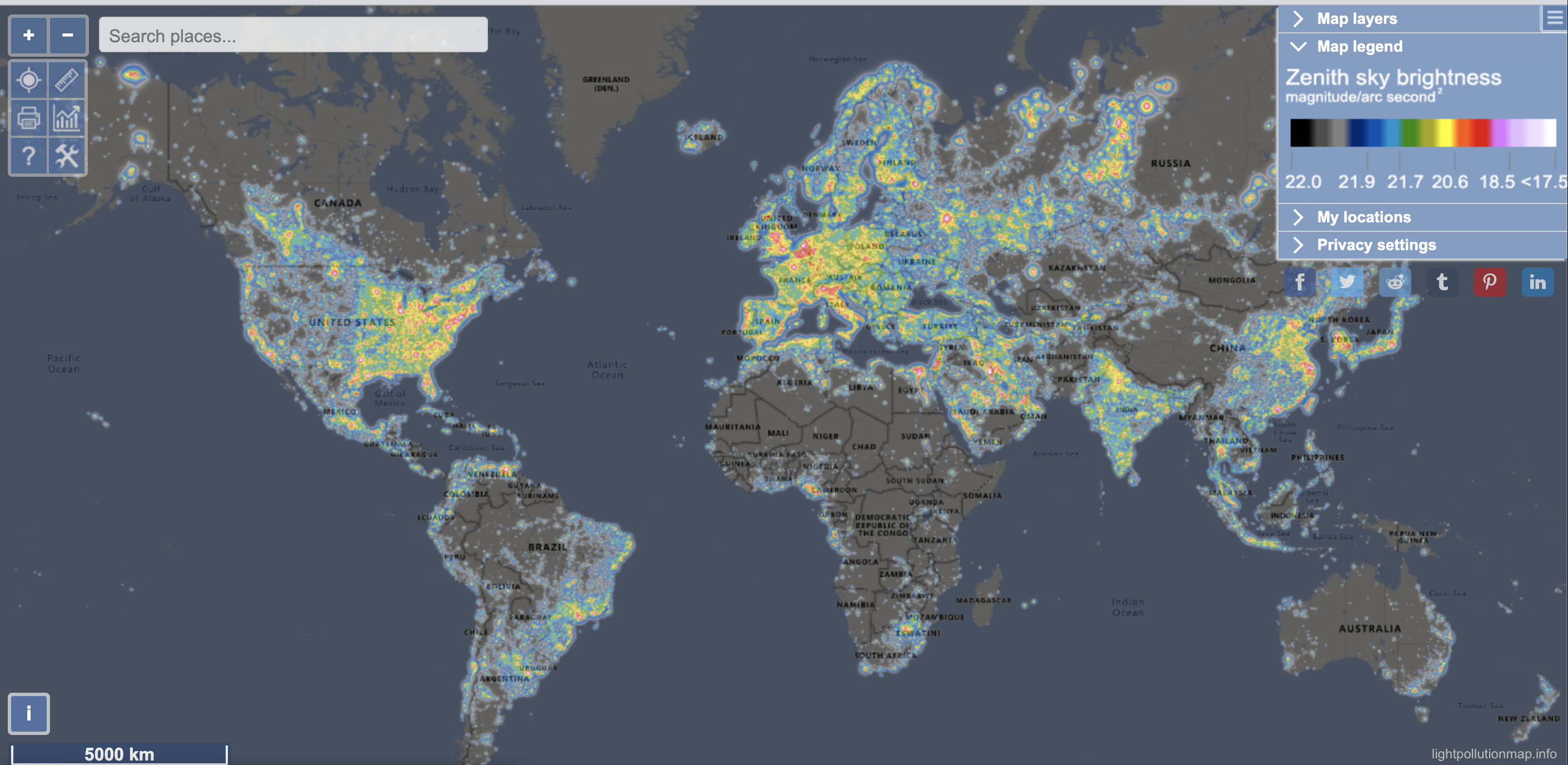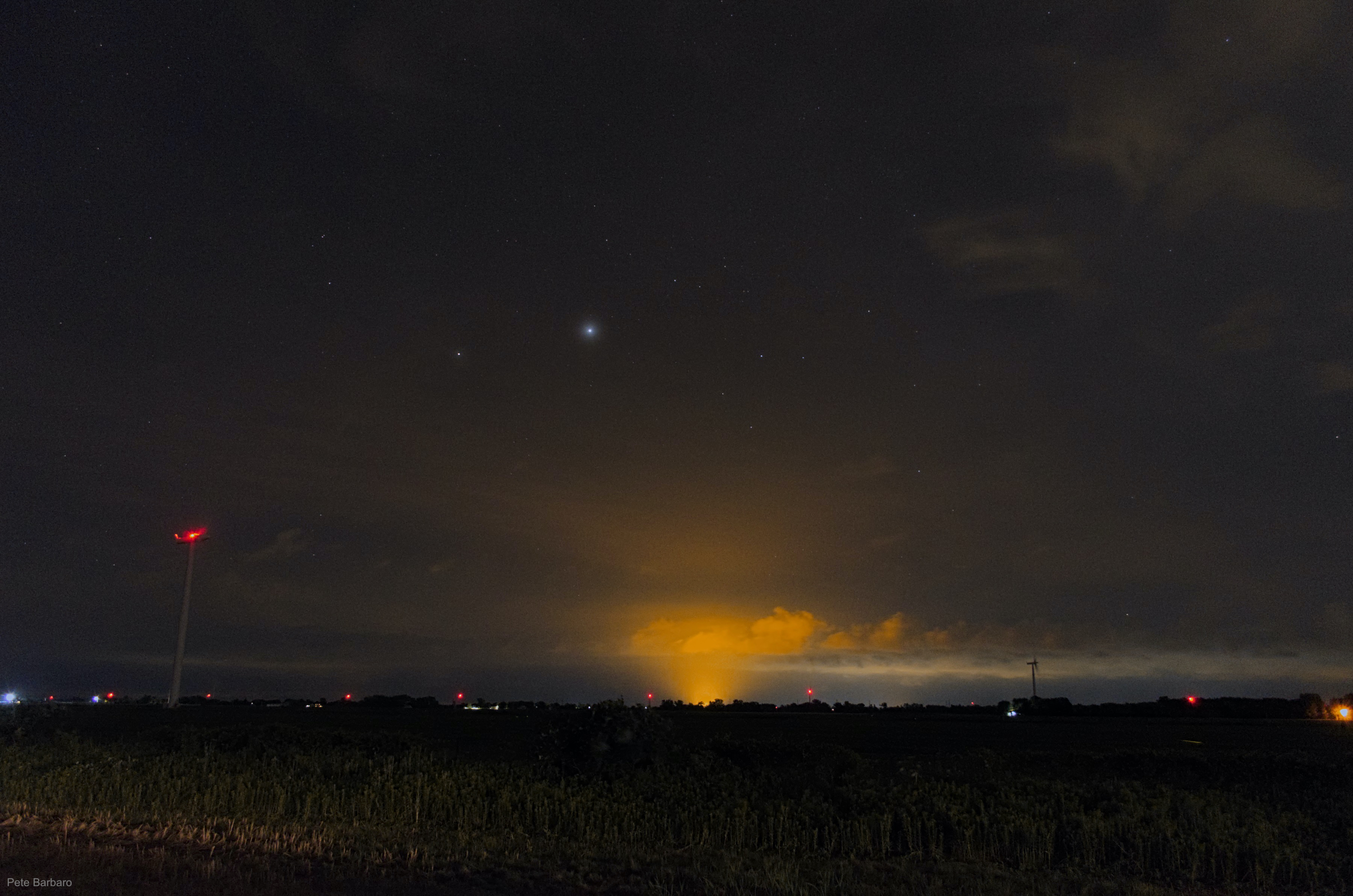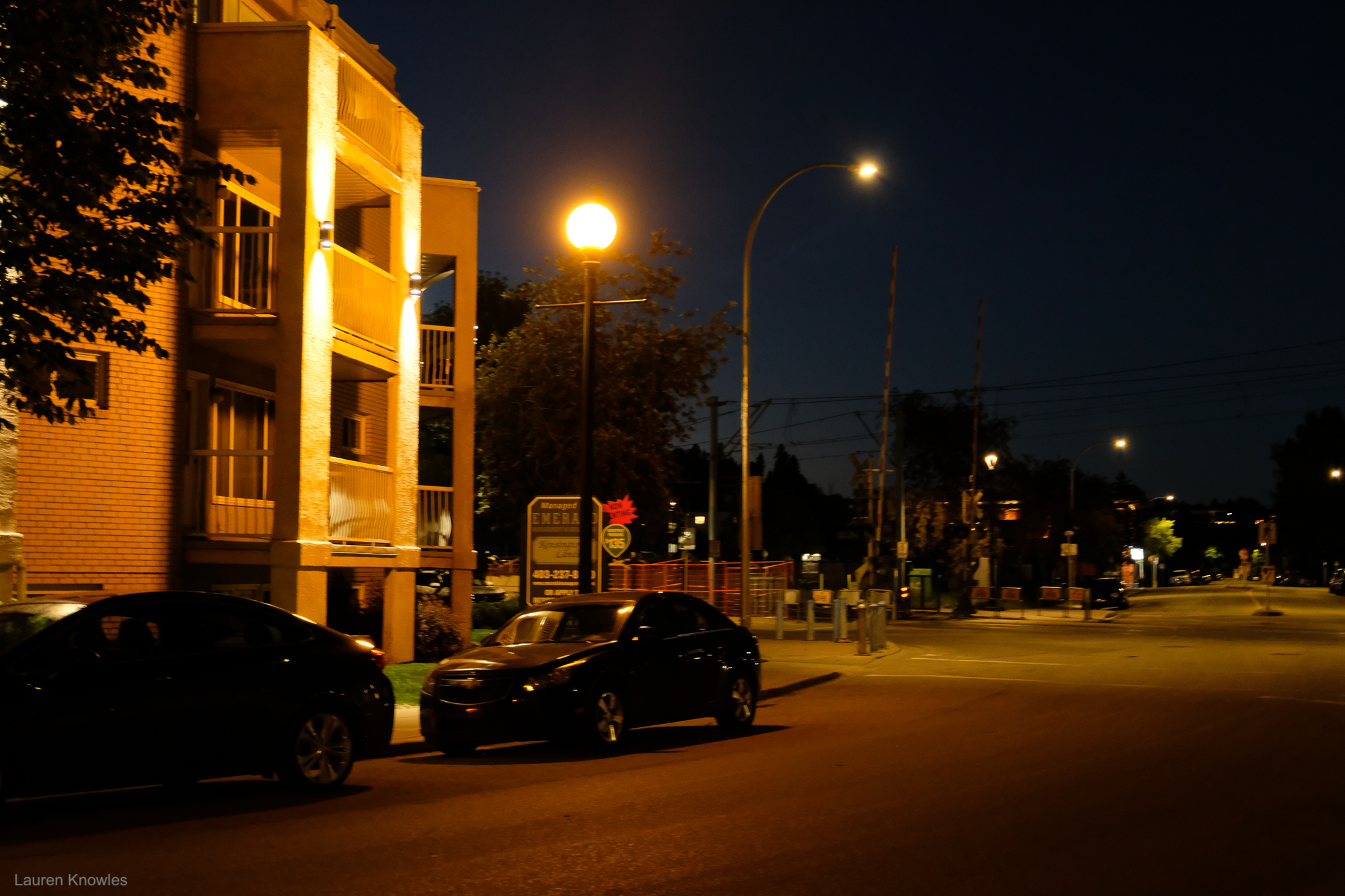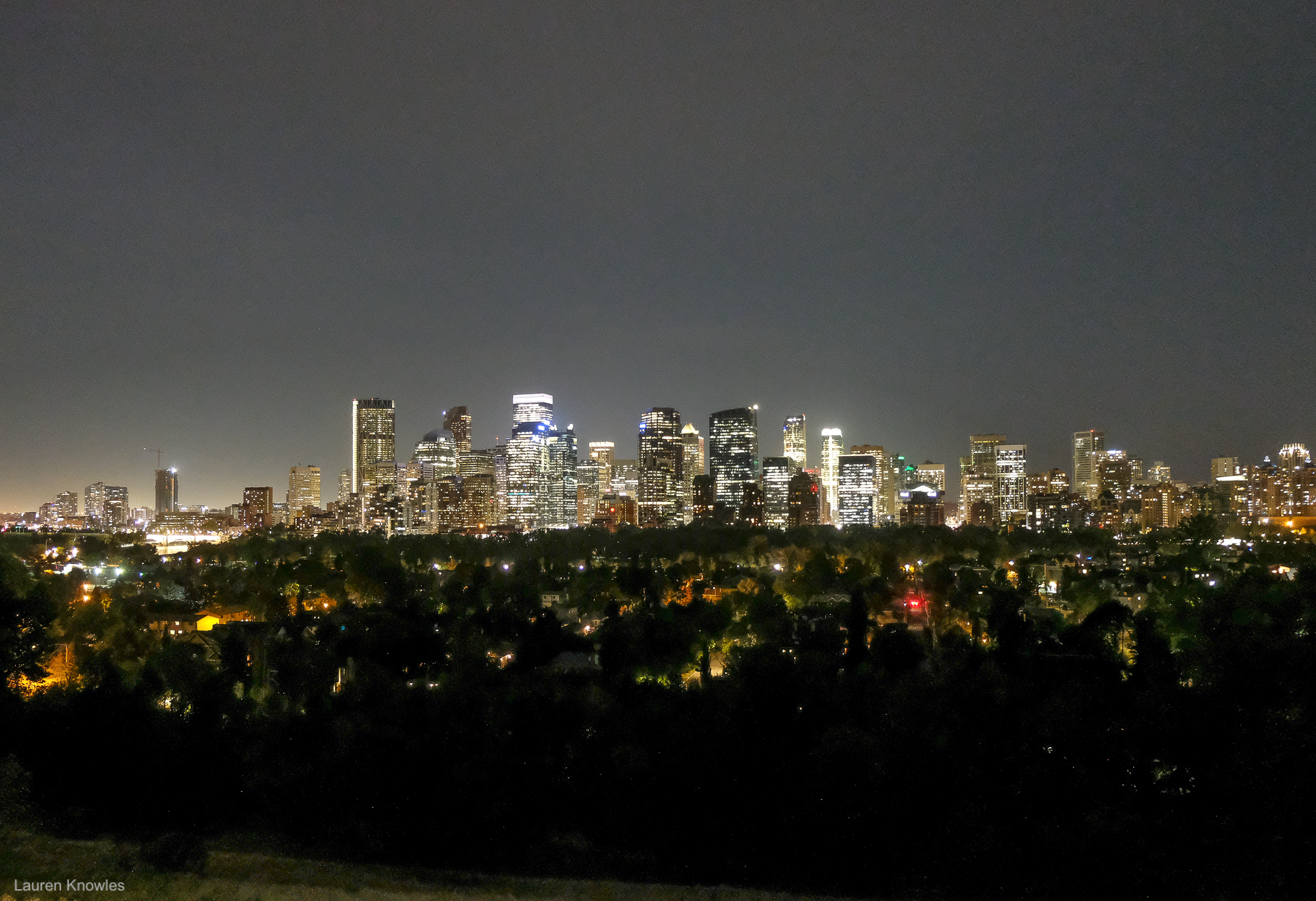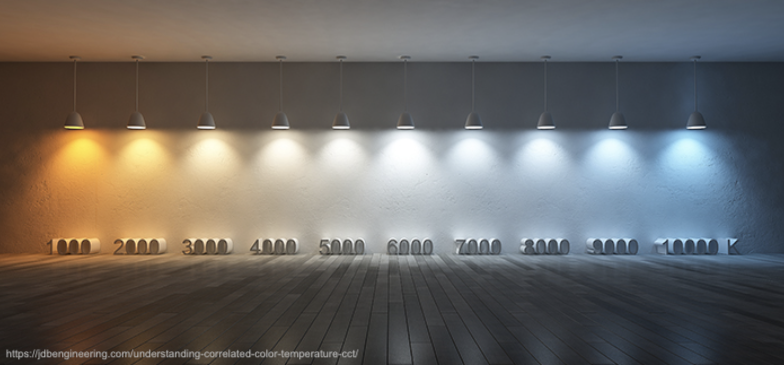What is light pollution?
Before the use of electric lighting was widely adapted (street lighting in the mid 1800’s, and light bulbs in the mid 1900’s [1]), humans relied on the sun as their primary source of light. Artificial light was created with candles and lamps powered by gas, coal, and oil, but these sources were inefficient, high maintenance, and often linked to health problems [1]. With the advent of electric lighting came streets and homes lit up after dark, allowing for work and leisure to continue even after the sun had set.
These days after the sun goes down, most of our streets are lit up throughout the night, office towers shine like beacons, and billboards and signs spew bright lights in all directions. The glow from cities and towns after dark can be seen from kilometres away, and those of us living in urban areas can’t see more than a handful of the brightest stars in the night sky.
Artificial light at night is necessary and useful to a certain extent, such as for safety and roadway illumination. Modern and urban lighting practices, however, have evolved to encourage excessive lighting in the name of security, safety, and visibility. This has resulted in severe light pollution - the inappropriate or excessive use of artificial light - in and around major cities worldwide.
The presence of artificial light around the world increases at a rate of 6% each year [2], and it is estimated that 99% of the population in Europe and the United States and 62% of the remaining world population are exposed to light pollution [3]. The map below shows light pollution, measured as sky brightness, across the globe.
Light pollution falls into four categories:
Skyglow: the brightening of the sky over inhabited areas
Light trespass: light falling where it is unintended or unnecessary
Clutter: bright, confusing, and excessive groupings of light sources
Glare: excessive light that reduces visibility
Below are some examples of what light pollution can look like:
Light is fundamental to the survival of nearly every species. It regulates circadian rhythms, feeding and foraging behaviours, nesting behaviours, mating rituals, and influences overall health. All biological processes rely on the natural light:dark cycle. Artificial light at night, however, disrupts that natural cycle. Many naturalists, environmentalists, and medical researchers consider light pollution to be the most pervasive and fastest-growing form of environmental pollution, and a growing body of research suggests that this light pollution has long-term adverse effects on both human and environmental health [4].
Learn more about the impacts of light pollution and artificial light at night:
Lighting, heritage, and culture
Correlated colour temperature, blue light, and LEDs
Correlated colour temperature (CCT) is a measure of the colour appearance of light, expressed in degrees Kelvin (K). Higher temperatures, such as 4000K or 5000K, appear blue or white. Lower temperatures, such as 2700K or 3000K, appear yellow or orange. Higher CCT light sources contribute more to light pollution than lower CCT sources [5], and contain higher amounts of blue light.
LED light bulbs are very popular because they are more energy efficient than traditional incandescent bulbs, but they are a large contributor to light pollution. LED lights that produce a white glow have a CCT of 4000K or higher, and contain large amounts of blue light.
During the day, we are naturally exposed to blue light from sunshine. This is beneficial to us - it boosts attention, reaction times, and mood [6]. Exposure to blue light after the sun has set, however, may be detrimental to our health because it interferes with the circadian rhythm [5], the disruption of which can result in the development of various health issues and sleep problems.

